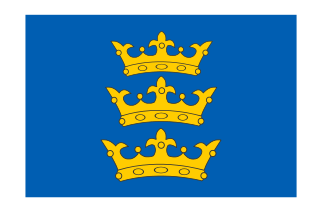
The Lordship of Ireland, sometimes referred to retroactively as Norman Ireland, was the part of Ireland ruled by the King of England and controlled by loyal Anglo-Norman lords between 1177 and 1542. The lordship was created following the Norman invasion of Ireland in 1169–1171. It was a papal fief, granted to the Plantagenet kings of England by the Holy See, via Laudabiliter. As the Lord of Ireland was also the King of England, he was represented locally by a governor, variously known as the Justiciar, Lieutenant, Lord Lieutenant or Lord Deputy.
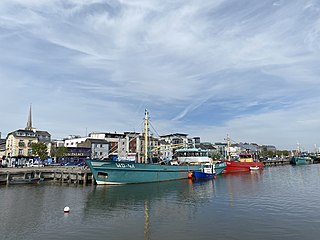
Wexford is the county town of County Wexford, Ireland. Wexford lies on the south side of Wexford Harbour, the estuary of the River Slaney near the southeastern corner of the island of Ireland. The town is linked to Dublin by the M11/N11 National Primary Route; and to Rosslare Europort, Cork and Waterford by the N25. The national rail network connects it to Dublin and Rosslare Europort. It had a population of 20,188 according to the 2016 census.

Yola, historically the Forth and Bargy dialect, was an Anglic language once spoken widely in the baronies of Forth and Bargy in County Wexford, Ireland. It is thought to have evolved from Middle English, which was brought to Ireland during the Norman invasion, beginning in 1169. As such, it was similar to the Fingallian language of the Fingal area. Both became functionally extinct in the 19th century when they were replaced by modern Hiberno-English, The name "Yola" means "old" in the language.
John Kelly lived in the town of Killanne in the parish of Rathnure, west of Enniscorthy, in County Wexford in Ireland, and was a United Irish leader who fought in the Irish Rebellion of 1798. Kelly was obviously well known to rebel and loyalist alike during the short duration of the Wexford Rebellion but almost nothing is known of him outside this time. He was one of the leaders of the rebel victory at the Battle of Three Rocks which led to the capture of Wexford town but was later seriously wounded while leading a rebel column at the Battle of New Ross.

Robert FitzStephen was a Cambro-Norman soldier, one of the leaders of the Norman invasion of Ireland, for which he was granted extensive lands in Ireland. He was a son of the famous Nest, daughter of Rhys ap Tewdwr, the last king of Deheubarth. His father was Nest's second husband, Stephen, Constable of Cardigan. Following the death of her first husband, Gerald de Windsor, her sons had married her to Stephen, her husband's constable for Cardigan. By Stephen, she had another son, possibly two; the eldest was Robert, and the younger may have been Hywel.
Fingallian or the Fingal dialect is an extinct Anglic language formerly spoken in Fingal, Ireland. It is thought to have been an offshoot of Middle English, which was brought to Ireland during the Norman invasion, and was extinct by the mid-19th century. Although little is known of Fingallian, it is thought to have been similar to the Forth and Bargy dialect of County Wexford.
South Wexford was a UK Parliament constituency in Ireland, returning one Member of Parliament from 1885 to 1922.
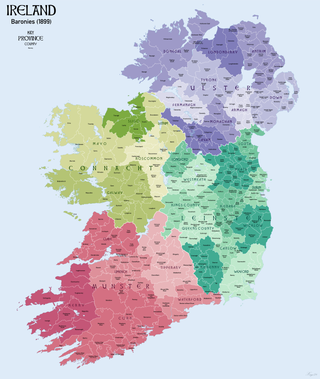
In Ireland, a barony is a historical subdivision of a county, analogous to the hundreds into which the counties of England were divided. Baronies were created during the Tudor reconquest of Ireland, replacing the earlier cantreds formed after the original Norman invasion. Some early baronies were later subdivided into half baronies with the same standing as full baronies.
Littletown could be the following places:

Kilmore or Killmore, locally pronounced 'Kilmoor', is a village and townland in south County Wexford, Ireland, about 16 kilometres (9.9 mi) from Wexford town.
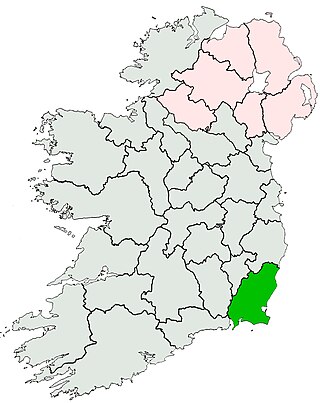
County Wexford is a county located in the south-east of Republic of Ireland, in the province of Leinster. It takes its name from the principal town, Wexford, named 'Waesfjord' by the Vikings – meaning 'inlet (fjord) of the mud-flats' in the Old Norse language. In pre-Norman times it was part of the Kingdom of Uí Cheinnselaig, with its capital at Ferns.
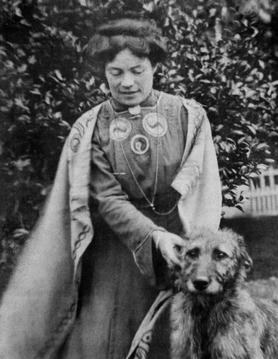
Kathleen Anne Browne was an Irish politician, farmer, writer, historian and archaeologist. She was arrested after the Easter Rising and held in Kilmainham Gaol. During the Civil War, she was Pro-Treaty and joined Cumann na nGaedheal. She was a member of Seanad Éireann from 1929-36. She was a fluent speaker of Yola, an Anglic language of Wexford.

The siege of Wexford took place in early May 1169 and was the first major clash of the Norman invasion of Ireland. The town was besieged by a combined force of Normans under Robert Fitz-Stephen and soldiers loyal to Diarmait mac Murchadha. After being ousted as King of Leinster, Diarmait had recruited the Normans to help him regain control of Leinster and the semi-independent Norse-Gaelic seaport of Wexford. Although the attackers did not breach the town's walls, Wexford surrendered after almost two days and came under Norman control.

Bargy Castle is a Norman fortress near the village of Tomhaggard in the Barony of Bargy, County Wexford, Ireland, some 12 kilometres (7.5 mi) south-west of Wexford town. The name Bargy derives from Ui Bhairrche, the name of a local tribe.
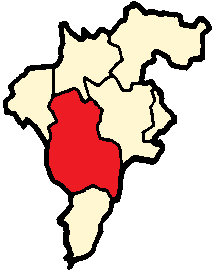
Idrone East is a barony in County Carlow, Ireland. The early barony of Idrone was split into East and West in 1799.

The Yola people, historically known as Forth and Bargy people or Forthers, were an ethnic group that formed in the baronies of Forth and Bargy in County Wexford after the Norman invasion of Ireland at Bannow Bay in 1169. They were descendants of the original Norman invaders and hence they were distinct from the rest of Ireland in their customs, manners and appearance. As time progressed, the Yola people became mixed with the diverse medieval ethnic mix which colonized County Wexford, including French, Norman, Danish, Welsh, English, Irish, Flemish and the original Old Norse settlers who colonized the area prior to the invasion.
Taghmon or Taughmon is a place name and may refer to:

Forth is a barony in County Wexford in Ireland.
Diarmaid Ó Muirithe was an Irish lexicographer, journalist and author.












